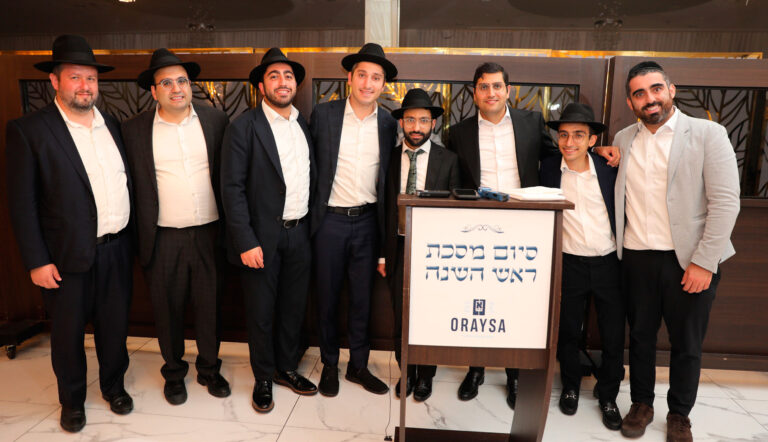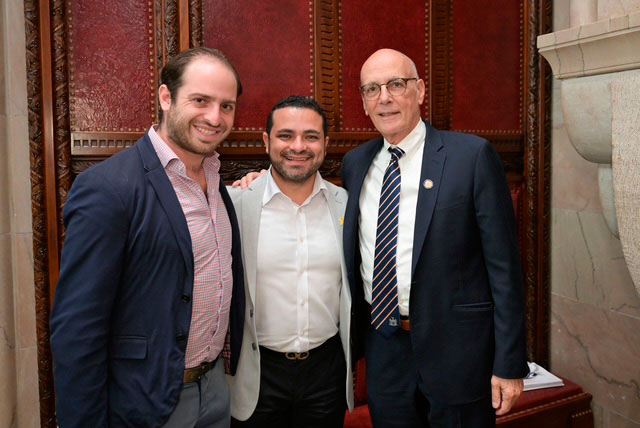It was not a war they wanted, but when it was over, they found themselves with huge swaths of precious territory.
We refer here not to the modern miracle of Israel’s Six-Day War in 1967, but rather to our ancestors’ miraculous conquest of two large kingdoms east of the Jordan River shortly before they crossed into the Land of Israel.
Beneh Yisrael asked Sihon, ruler of the Emorite Kingdom, permission to harmlessly cross through his country to shorten their journey to their homeland. Sihon not only refused, but quickly mobilized his army and launched an unprovoked attack. With Gd’s help, Beneh Yisrael vanquished Sihon’s army and, in fact, his entire kingdom, seizing theterritory. Og, king of the neighboring Bashan region, mistakenly thought he could succeed where Sihon had failed, and attacked Beneh Yisrael. He, too, suffered defeat, and his territory – like that of Sihon – fell into Israelite hands.
Two of Beneh Yisrael’s twelve tribes – Reuven and Gad – saw the great economic potential posed by the vast, verdant pastures of the newly-conquered territory. Herdsmen by profession, the men of these tribes approached Moshe and asked to permanently settle this region. Rather than cross over with the other tribes into Eretz Yisrael, the land of Avraham,, Yitzhak and Yaakov, the people of Reuven and Gad preferred to remain east of the Jordan which was perfectly suited for their large flocks of cattle.
As Bad as the Spies?
Moshe responded by harshly censuring these tribes for making such a request. He compared them to the meragelim – the ten spies whom he had sent to scout the Land of Israel nearly forty years earlier. The spies returned with a frightening report, and discouraged the people from proceeding into the land, convincing them that they were powerless against the fearsome armies of the Canaanites in Eretz Yisrael. The people were seized with terror, and decided not to proceed. Gd killed the spies, and punished the nation by leading them through the desert for forty years until that entire generation perished. Moshe charged that the tribes of Reuven and Gad were just like the spies, refusing to enter the land, preferring to remain where they were.
Reuven and Gad then clarified to Moshe that this was not their intention. Their plan was that their men would join the other tribes across the Jordan River and assume a leading role in the war effort, in the conquest of Eretz Yisrael. Only after the victory over the enemies and the successful capture of the land would the men return to their wives and children back east of the river, where they would permanently reside.
Moshe accepted this arrangement. He instructed his successor, Yehoshua, that if the tribes of Reuven and Gad fulfill their promise, and join the other tribes in the military campaign to seize the Land of Israel, then they were to be given the region east of the Jordan River as their permanent territory.
Let us consider Moshe’s harsh accusation that the people of Reuven and Gad resembled the spies. We must ask, is this really true? Even if Moshe deemed their request inappropriate, how were they like the spies? Did they try to frighten the people? Did they deny Gd’s ability to help Beneh Yisrael defeat the armies of Canaan?
To answer this question, we need to revisit the story of the spies, and, specifically, to understand who the spies were and what drove them to do what they did.
A Story of Misguided Piety
The Torah (Bamidbar 13:3) refers to the spies with the term “anashim,” which Rashi interprets as denoting men of distinction. Moshe chose for this important mission not ordinary people, but rather some of the most important and distinguished members of the nation. As Rashi emphasized, the meragelim were righteous men at the time they were selected for this job. But something led them astray, and drove them to betray their mission and convince the people not to enter the Land of Israel.
Some rabbis advanced the bold, counterintuitive theory that it was specifically the spies’ piety that caused their downfall. Precisely their fierce passion for spirituality and for closeness to Gd caused them to insist on remaining in the desert rather than proceeding to Eretz Yisrael.
In the desert, Beneh Yisrael lived a purely spiritual existence. They were sustained supernaturally, with manna falling from the heavens, and a miraculous well traveling with them to provide water. They were protected by Gd’s “clouds of glory” that encircled them, and their clothes never wore out. They had no need to work for a living, and they spent their days learning Torah from Moshe and Miriam. There was practically nothing mundane about their lives.
This would change drastically upon crossing into Eretz Yisrael. Once in the land, they would no longer receive miraculous food and water. They would need to farm and to build homes, cities and infrastructure. They would need to train an army to fight wars against bitter enemies with advanced weaponry. No longer would they spend their days immersed entirely in Torah and spiritual devotion.
And this, some explain, is what the spies feared. They wanted to remain in the desert. They were not prepared to forfeit their miraculous, spiritual existence, their ability to abstain entirely from mundane activities and devote their time and attention exclusively to spirituality.
But this kind of piety was gravely misguided. We are not placed in this mundane world in order to escape it. Rather, we are here to infuse our mundane world with spirituality.
Serving Gd in the “desert,” when all of one’s physical needs are miraculously provided for, when one has nothing to do but listen to Moshe Rabbenu’s teachings, is relatively easy. There are few temptations and few religious challenges. We are not meant to serve Gd under those pristine conditions, without struggle. Instead, we are meant to embrace the challenge of engaging in the realm of the mundane while elevating this realm through strict Torah observance and by allotting considerable amounts of time for spiritual engagement.
If a person has all his material needs cared for, he does not need to struggle to show his religious commitment. But if a person needs to work for a living, and he wakes up early to pray with a minyan, and he learns Daf Yomi on the train, and he conducts all his business affairs ethically and courteously, and he refrains from work on Shabbat and holidays despite the loss of revenue, and he retains his beliefs and valueseven while engaging with people who do not share those beliefs and values – he truly shows his devotion to Gd. This is how we are meant to serve Gd.
For this reason, the spies’ piety was misguided. We are to serve Gd in the Land of Israel, within the realm of natural, mundane living, and not in the ideal conditions of the “desert.”
The Spiritual Shepherds
Possibly, this was also the mistake of Reuven and Gad.
Their desire to remain east of the Jordan River might have been spiritually driven. Rather than cross into the land, where they would have to work as farmers, spending their days plowing, sowing, harvesting and collecting, they wanted to live as shepherds, enjoying the calm and serenity of the open pastures.
Several of our nation’s greatest spiritual giants, such as Yaakov, Moshe, and King David, worked as shepherds, and for good reason. Shepherding, we might say, is spiritual work. The shepherd merely walks with his herds among the fields, where he finds himself alone with his Creator. This profession allows a person to spend his day in “hitbodedut,” in silent meditation, in solitude, speaking to and connecting with Gd.
This might be what the people of Reuven and Gad wanted. They sought the spiritual life of shepherding over the busy life of farming. They wanted to bond with the Almighty the easy way – in the open pastures east of the Jordan River, rather than embracing the struggle of injecting spirituality into the farmer’s grueling workday. This was their mistake, for which Moshe compared them to the spies.
It was only once they committed to join the war effort, to assume the challenge of infusing the realm of the mundane with spirituality, that their request was granted.
Unity Through Struggle
The message conveyed by this story, then, is that Torah isn’t supposed to be easy. We aren’t meant to observe mitzvot only under pristine, ideal conditions. To the contrary, we display our commitment precisely by remaining loyal to Gd when this loyalty requires struggle and sacrifice.
We might apply this message to the period we begin this month – the period of ben hametzarim, when we mourn the destruction of the Bet Hamikdash, a calamity which, tradition teaches, befell us on account of the sin of sinat hinam, hatred and strife among our nation. This is a time customarily observed as a time for focusing on how to improve our sense of unity and togetherness, on eliminating tension and fighting, creating closer bonds with our fellow Jews.
We must remember that ahdut – unity – requires struggle. We don’t create ahdut by loving and respecting our fellow Jews when this is easy – when we have no reason to dislike them, when we agree on everything, when we see things the same way. We build ahdut precisely when it’s difficult, precisely when we have reason to feel resentful, when we have strong disagreements, when we rightly oppose that which someone else said or did. This is how we achieve unity – through struggle, by overcoming our instinctive feelings of disdain and resentment, by truly loving and respecting those whom we might feel justified in disliking.
Let us embrace this struggle, and make the commitment to bond with all our fellow Jews, both within our community and beyond, so we can, once and for all, cure the destructive ill of sinhat hinam and become worthy of our final redemption, may it come speedily and in our times, amen.












